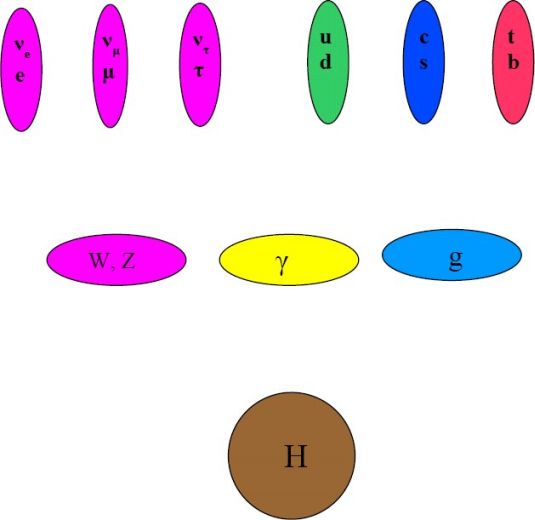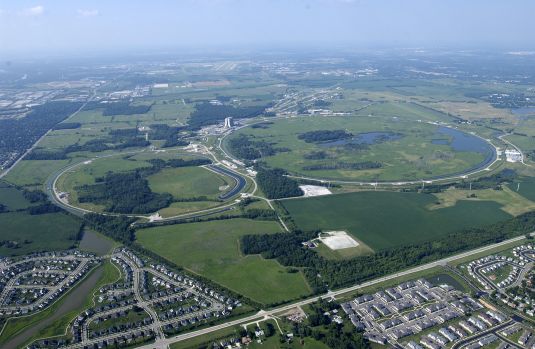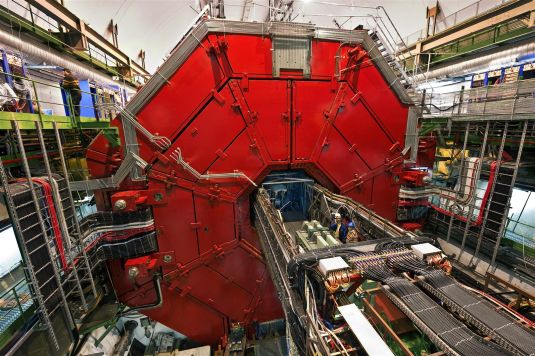Research focuses on the structure of elementary particles and nuclear matter and involves ambitious collaborative experimental projects with world class accelerator centres such as the former Joint Institute for Nuclear Research in Dubna near Moscow or the Deutsches Elektronen Synchrotron Institute in Hamburg. Our current partners are the Fermilab Institute in Batavia, USA, and especially CERN in Geneva. At present two main research topics drive the Department, namely the study of top quark characteristicsand the exploration of nuclear matter characteristics under extreme conditions.
Top quark
Knowing the elementary units of the structure of matter has been the goal of science since the time of Demokritos, more than 2000 years ago. However, only in the last 100 years due to radical advances in the field, has this effort produced real results. Atoms were once considered the most basic units of matter, however it was subsequently discovered that nuclei exist inside atoms, nucleons inside nuclei, and quarks inside nucleons.

The picture above displays a contemporary view of the structure of matter. The first line is represented byquarks and leptons, the second line by particles mediating interactions between quarks and leptons, and the last line by a single particle whose existence is theoretically predicted, but has not been experimentally discovered yet – the so-called Higgs boson. The importance of this particle’s discovery is underlined by the fact that it is the main goal of the multi-billion LHC project at CERN in Geneva.
The Department of Subnuclear Physics actively participated in the most significant discovery in high-energy physics in the last twenty years – the top quark discovery and exploration of its characteristics. Top quark was experimentally discovered in 1995 by the CDF and D0 collaborations using the TEVATRON accelerator complex in Batavia, USA.

The Tevatron accelerator at the Fermilab Institute in Batavia for the study of proton-antiproton collisions – the place of the top quark discovery.
Compared to other quarks, top quark has a number of unique characteristics. Its weight is approximately the same as the tungsten nucleus. It decays very quickly, so it cannot become bound with another quark. From top quark decay products it is possible to reconstruct its original parameters, which are not deformed by a bound state. For example, precise measurement of the top quark mass will specify the mass area where the Higgs boson could be situated and will help its discovery at the LHC.
A group from the Department of Subnuclear Physics has focused on the measurement of top quark parameters – mass, charge, spin characteristics. It has developed several original methods for measuring these parameters and the results (besides being published in reputable journals) have also won the “Result of the Week“ award in Fermilab’s Today magazine several times.
Exploration of the new state of nuclear matter
Protons and neutrons consist of quarks held together by the strong force known as the strong interaction. The interchange of particles called gluons is its source. No isolated quark or gluon have been observed so far – they are confined within composite particles such as protons and neutrons.
A contemporary theory of the strong interaction predicts the “liberation“ of quarks and gluons at temperatures exceeding 2000 billion K and the transformation of nuclear matter into the quark-gluon plasma state. Such extreme conditions existed in nature for a few millionths of a second after the Big Bang. The collision of two lead nuclei accelerated in the LHC close to the speed of light will enable us to gain a speck of this hot matter the size of an atomic nucleus, and to observe how it goes through the process of expansion and cooling into the state of normal matter. By studying such collisions at the LHC, the ALICE experiment will allow us to peer deep into the processes evoked by the strong interaction and glimpse matter the way it was immediately after the Big Bang. Our participation in the ALICE experiment is the continuation of twenty years of cooperation with CERN on the HELIOS, WA-94, WA-97 and NA-57 experiments. Our results led to an official announcement in 2000 by CERN that a new state of matter with quark-gluon plasma characteristics had been created in the laboratory. Our results were given the SAS Award in 2002.

Schematic picture of the LHC (Large Hadron Collider) accelerator placement at the CERN Institute in Geneva.

Detector of the ALICE experiment at the LHC accelerator at CERN, Geneva for the study of heavy ion collisions.
 Contact
Contact Intranet
Intranet SK
SK






